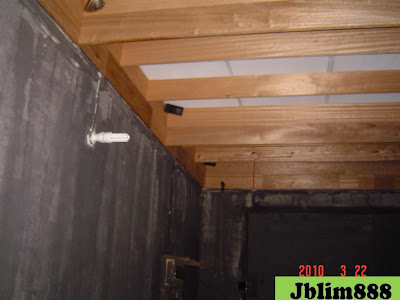
Sunday, March 28, 2010
LONG RANGE SPEAKER FOR SWIFTLET HOUSE
This is a long range speaker which i installed at the entrance of the swiftlet house. The advantage is that the sound can travel a long distance, however, because it is at a height, the sound will not affect the neighbours. The disadvantage is the sound can only face one direction.

Saturday, March 27, 2010
Thursday, March 25, 2010
Monday, March 22, 2010
Thursday, March 18, 2010
Nest Building

Building a nest involves the repeated process of using the tongue and creating a sticky substance which is string like and quick drying.
The liquid is applied on a hard, solid and sturdy surface repeatedly until a curved shape is established.
The liquid is applied on a hard, solid and sturdy surface repeatedly until a curved shape is established.
This curved structure allows the eggs to be laid inside safely.
After the eggs are laid, the parents will take turns hanging outside the nest to allow each other time to rest.
Wednesday, March 17, 2010
THE REPRODUTION CYCLE OF SWIFTLETS
+of+DSCN1462.JPG) It takes a swiftlet hatchling around 8 months to find a home. It will start the process of building a nest for itself and it's partner. This process will take around 32 days to make sure the nest is large enough for both swiftlets.
It takes a swiftlet hatchling around 8 months to find a home. It will start the process of building a nest for itself and it's partner. This process will take around 32 days to make sure the nest is large enough for both swiftlets..JPG) After the mating process, it takes around 8-11 days for the 1st egg to be laid, and another 3-4 days for the 2nd egg to be laid.
After the mating process, it takes around 8-11 days for the 1st egg to be laid, and another 3-4 days for the 2nd egg to be laid.
Most of the time, a maximum of 2 eggs is laid. In a few instances, the 2nd egg may unfortunately be ejected because the nest may be too small to accomodate both the eggs and the mother.

The Incubation stage takes 22-28 days. The baby swiftlets will soon hatch into beautiful 'pink' baby swiftlets.


After another 45-50 days, the baby swiftlets will be ready to leave the nest.
In another 7-8 months time, the whole process will be repeated when the young swiftlets are ready to start their own families.
Each swiftlet pair breeds and build nests on an average of 3 times a year.
Each swiftlet pair breeds and build nests on an average of 3 times a year.
Harvesters may sometimes remove the nests before the eggs are hatched. When this happens, the swiftlets will immediately build a new one to replace the old one. However, I would not recommended this as it is unethical and may cause undue stress for the swiftlets.
Friday, March 12, 2010
SWIFTLETS TALK CAFE 燕窝网咖
Click the "EXIT" button to enjoy the full screen slideshow with beautiful music.
Wednesday, March 10, 2010
Tuesday, March 9, 2010
MY SWIFTLET'S HOUSE IN CONTAINER
.JPG)
.JPG) This is a swiftlet house that is modified from an used container. The swiftlet house has been in use for 4 years. There is no humidity control being used in the house, and also, the house is not very well ventilated due to the structure of the container and can get very humid and warm on hot days. There are only a few basins with bird's dropping solution in the house. However, there are still a lot of swiftlets and nests housed in the bird house. It is currently up to the fourth generation. Credit should go to my use of suitable swiftlet audio and the special aroma.
This is a swiftlet house that is modified from an used container. The swiftlet house has been in use for 4 years. There is no humidity control being used in the house, and also, the house is not very well ventilated due to the structure of the container and can get very humid and warm on hot days. There are only a few basins with bird's dropping solution in the house. However, there are still a lot of swiftlets and nests housed in the bird house. It is currently up to the fourth generation. Credit should go to my use of suitable swiftlet audio and the special aroma.Saturday, March 6, 2010
Thursday, March 4, 2010
THE ECO-SAFE GREEN SWIFTLET'S HOUSE
The beautiful, nice and eco-safe green swiftlet's house project .


This facility is eco-friendly and safe. It uses a recyclable eco-friendly battery. We have been using it for up to a month now with no complications, or problems. It runs for 24 hours a day and minimal maintenance is required.



This facility is eco-friendly and safe. It uses a recyclable eco-friendly battery. We have been using it for up to a month now with no complications, or problems. It runs for 24 hours a day and minimal maintenance is required.
Through the use of the solar panel system, we have no need for any external sources of energy. The bird house is now self sufficient.
Tuesday, March 2, 2010
Subscribe to:
Comments (Atom)






.JPG)




